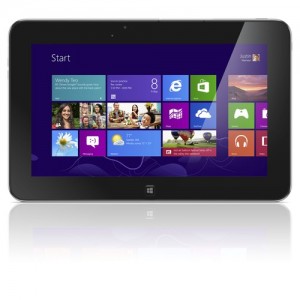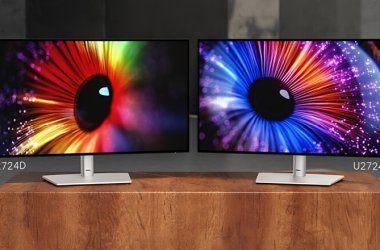 Dell will release Windows tablets later this year, and could potentially introduce devices with screen sizes larger than 10 inches.
Dell will release Windows tablets later this year, and could potentially introduce devices with screen sizes larger than 10 inches.
The products will be a refresh of Dell’s current tablet offerings, said Steve Lalla, Vice President and General Manager of Mobile Products and Solutions, Dell.
Dell is exploring designs with different screen sizes to its current 10-inch models, he said, though it was unclear if those new sizes will be among the products released later this year. Dell is primarily interested in screen sizes of 10 inches or larger, Lalla said.
The new tablets will succeed the XPS 10, which runs Windows RT, and the Latitude 10, which runs Windows 8 Pro. Dell continues to work on Windows 8 and Windows RT devices, Lalla said, but he didn’t give further details about the upcoming products or their exact release dates.
The company also plans to release thinner and lighter laptops and convertibles later this year.
Dell’s tablets are geared toward the BYOD (bring-your-own-device) market, meaning they’re designed to be suitable for use both at work and at home. The company aims to deliver better remote management, cloud and encryption features in its future products.
But Windows RT has been poorly received so far, and Dell recently cut US$50 off the starting price of the XPS 10, which is now available for $449 with 32GB of storage. Lalla didn’t comment on the demand for its Windows RT tablet.
However, Dell continues to work with ARM partners, Lalla said. The XPS 10 runs on a dual-core Qualcomm Snapdragon processor, which is based on ARM architecture.
Dell’s other tablet, the Latitude 10, runs on Intel’s Atom Z2560, code-named Clover Trail. The Latitude 10 successor could coincide with the release of Intel’s upcoming Atom tablet processor code-named Bay Trail, which will succeed Clover Trail. Bay Trail tablets are expected to become available in the fourth quarter, around the time of the holiday shopping season.
Later this year, Intel will also release new fourth-generation Core processors based on the Haswell microarchitecture, which will succeed Ivy Bridge. Low-power Haswell chips will be used in some tablets, and Dell’s laptops and convertibles could potentially be based on Haswell. Last month CNET reported that an upcoming version of Windows code-named Blue has power management features that could increase battery life in Haswell-based laptops and tablets.
The plans were disclosed as a buy-out battle continues with Michael Dell and other investment groups fighting to take the company private. The process has caused consternation among some customers about the direction the company will take, especially the PC division, which had been de-emphasised in favour of Dell’s enterprise focus.
In a letter to his employees on April 1, CEO Michael Dell tried to calm down concerns, saying the company will continue to invest in PCs and tablets.
“We have plans to significantly increase investment in our PC and tablet business to enhance our ability to compete. While Dell’s strategy in the PC business has been to maximise gross margins, following the transaction, we expect to focus instead on maximising revenue and cash flow growth with the goal of improving long-term sales and competitive positioning,” Dell said in the letter.
Dell is evaluating the bids, and the board currently still backs the original US$24.4 billion bid from Michael Dell and Silver Lake Partners. That bid includes a $2 billion loan from Microsoft, which would ensure Dell remains committed to the Windows ecosystem.





